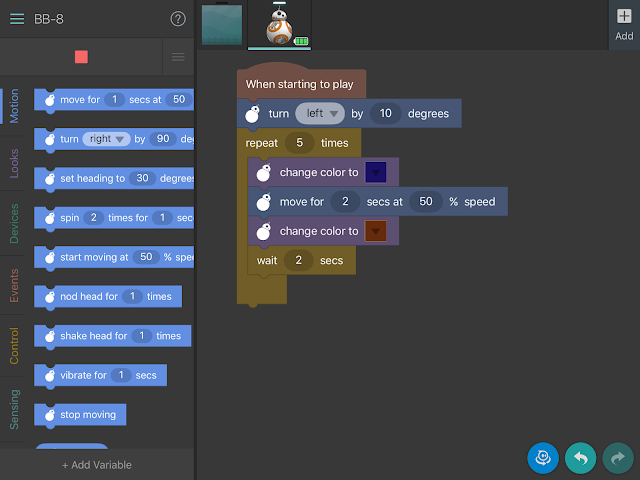Students explained that the sequence was 3, 6, 9, .....
Then what the rule was? Adding three every time.
Then I gave them code and asked them again what the sequence was suppose to look like and what the rule was.
The 10 degrees was to keep it on the number line.
I asked what the sequence should be. Some students said 2, 4, 6, 8, ...
I was impressed with my students, because they asked how far was 2 seconds at 50% speed. So we played it with the BB-8 and it was somewhere between 2 and 3.
I asked them to download the "Tickle" app.
Students then were to create their own sequence where the BB-8 had to move across the number line. Students had to take a screen-shot of the code and write what the sequence was on Notability and include the photo.
Here is an example of student's code:
It was a great activity for students to use code and their knowledge of sequences and rules together.


















